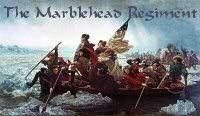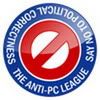Book Review: Why We Read What We Read
Fortunately for us, John Heath and Lisa Adams have attempted to answer these questions in their book Why We Read What We Read: A Delightfully Opinionated Journey Through Bestselling Books
Heath and Adams read nearly 200 books in order to answer why we read what we read. Their purpose, as stated in the introduction, was to "provide a glimpse into the current state of the national psyche by looking closely at the books Americans buy---specifically, those books they have bought in the greatest numbers since 1990," because "these books resonate with broad segments of the reading public" (5).
This was quite an undertaking and there is so much in this book that I had some difficulty writing a review that covered it all!
In the introduction, Heath and Adams laid out their plan of attack: which books were considered bestsellers, how they decided on categories, which books they excluded from their list (old books made popular again by being made into movies, memoirs & biographies, reference books, and cookbooks), and which years to research. Heath and Adams sorted the rest of the books into 4 categories: hardcover fiction, hardcover non-fiction, trade paperback (fiction & non-fiction), and mass market paperback (fiction).
Why We Read What We Read is laid out in six chapters, not including the introduction and the appendix:
- Chapter One is titled "The Obvious: Diet, Wealth, and Inspiration." This chapter focused on books about, obviously, diets, how to become focused and wealthy, and become inspired. As Heath and Adams noted, "of course everyone wants to be slim, rich, and motivated, and always has" (23). Lately, the craze has been for "low-carb" diets.
- Chapter Two is "Black and White and Read All Over: Good and Evil in Bestselling Adventure Novels and Political Nonfiction." Heath and Adams discussed authors such as John Grisham, Stephen King, and J.K. Rowling, and how the concepts of good and evil were treated in such popular novels. There was a large section about Harry Potter (one of my favorites!). The second half of the chapter detailed various political books that have made the top sales lists in recent years.
- Chapter Three is called "Hopefully Ever After: Love, Romance, and Relationships." As you could guess, this chapter was all about relationships and romance, especially romance novels. Americans have been very interested in receiving advice from people such as John Gray, Dr. Laura, and Dr. Phil. We also buy tons and tons and tons of romance fiction (guilty!)---romance novels "comprised over half (54.9%) of all popular paperback fiction sold in North America---and almost forty percent of all popular fiction sold" (116).
- Chapter Four is titled "Soul Train: Religion and Spirituality." This chapter is split between traditional Christian and "New Age" books. Heath and Adams wrote that all the books in this chapter share "three fundamental conclusions:
-Everything in life has meaning; there are no accidents.
-Love is the answer.
-What other gurus say is almost always wrong" (175).
These books include The Prayer of Jabez, The Purpose Driven Life, Conversations With God, and The Celestine Prophecy, plus the Left Behind series. Apparently many of us are seeking spiritual guidance.
- Chapter Five is "Reading for Redemption: Trials and Triumphs in Literary Fiction and Nonfiction." The books in this chapter, such as Cold Mountain, The Kite Runner, Into Thin Air, and The Nanny Diaries give readers the opportunity to step in to another person's life and read about their hardships and victories. We are looking for answers to life's difficulties and hope to learn from others' mistakes.
- Chapter Six is called "Deciphering 'Da Code': Conclusions." This final chapter spent a lot of time on The Da Vince Code, but also served as the conclusion.
Any bibliophile would find Why We Read What We Read a book worth reading. I thought it was quite interesting to come across books and authors I recognized and/or loved, and also to see how many books I had never heard of that had made the bestsellers lists.
Heath and Adams did a remarkable job reading, categorizing, and comparing so many books. Scattered through out the pages were little tidbits that caught their attention or funny items that were sort of editorial comments on themes. These were always interesting and amusing to read. The book was also quite funny to read, as Heath and Adams have a great sense of humor. I especially enjoyed the Harry Potter and literary jokes (One of my favorites, about HP and the Atkins Diet---"Only Harry Potter and the Sorcerer's Stone outsold [the New Diet Revolution] over that period, and we think that's at least in part because the young magician became a secret hero to the low-carbers. Sad, gaunt little Harry was locked in a closet most of his life by his evil relatives and thereby deprived of many of the fruits, cereals, breads . . ." (27).)
My only major dislike of Why We Read What We Read was Heath and Adams' assessment of political books. They have a very obvious bias toward liberal authors. The majority of the political section was spent criticizing conservative authors as unthinking, mean, and narrow-minded. The liberal authors, in contrast, wrote the equivalent of "schoolyard taunts" (104) and books that were often funny. Now, I am a Conservative and I admit that I am biased towards Conservative authors, but I know that those liberal authors mentioned in this book are not all sweetness and light, and nor do they just call conservatives "mean" and "bratty!" I would have prefered Heath and Adams write a more accurate and balanced section on political books. Even the section on "non-partisan" political books contains authors that I wouldn't consider non-partisan, plus digs at others I would consider non-partisan.
I do agree with Heath and Adams that we all need to read more books and read books that we do not necessarily agree with. By doing that, we widen our points of view, learn new information, and either expand or reaffirm our beliefs. It is important to do these things and to be well-read individuals.
The appendix contains about 50 pages of best seller lists, which would be the perfect place to find new books to read. I am glad the authors included the lists because it is interesting to see which books I am familiar with and expected to see and which books I have never heard of and am surprised to see.
I recommend Why We Read What We Read for anyone particularly interested in books . . . or anyone not really interested in books. As I wrote, we can all find something new and challenging to read. This book provides an excellent starting place.
This book is available at Amazon.com and your local bookstores.
Book Information: Why We Read What We Read: A Delightfully Opinionated Journey Through Bestselling Books by John Heath and Lisa Adams (Sourcebooks Trade; ISBN: 1-4022-1054-X; $16.95; 352 pages; paperback)
Note: Page numbers in this review correspond to an Advanced Reading Copy and might not be the same in the final book.
Originally posted at A Lady's Diversions.
Labels: Book Review, Books
 I Remember
I Remember
















































<< Home